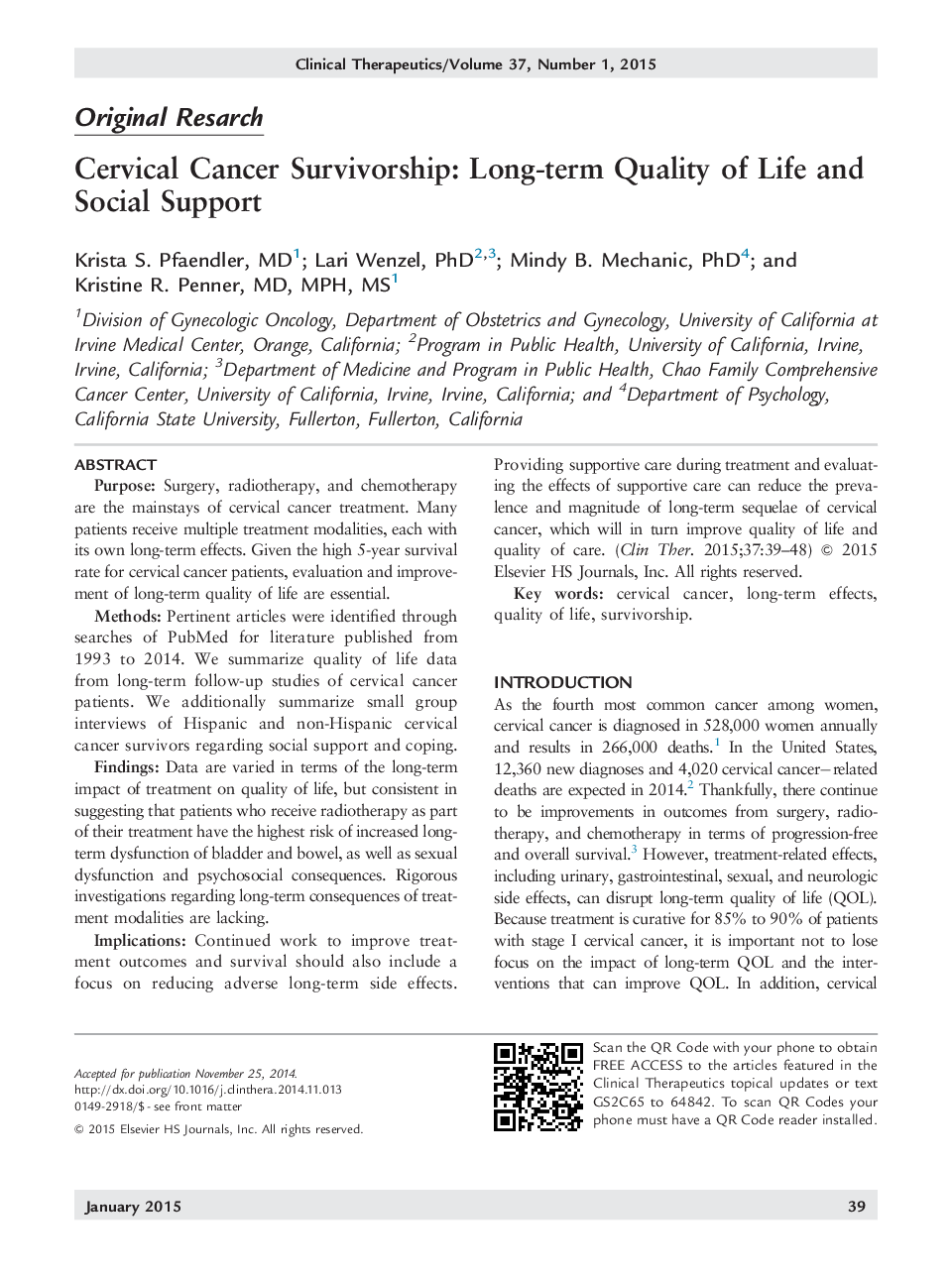| Article ID | Journal | Published Year | Pages | File Type |
|---|---|---|---|---|
| 5825193 | Clinical Therapeutics | 2015 | 10 Pages |
PurposeSurgery, radiotherapy, and chemotherapy are the mainstays of cervical cancer treatment. Many patients receive multiple treatment modalities, each with its own long-term effects. Given the high 5-year survival rate for cervical cancer patients, evaluation and improvement of long-term quality of life are essential.MethodsPertinent articles were identified through searches of PubMed for literature published from 1993 to 2014. We summarize quality of life data from long-term follow-up studies of cervical cancer patients. We additionally summarize small group interviews of Hispanic and non-Hispanic cervical cancer survivors regarding social support and coping.FindingsData are varied in terms of the long-term impact of treatment on quality of life, but consistent in suggesting that patients who receive radiotherapy as part of their treatment have the highest risk of increased long-term dysfunction of bladder and bowel, as well as sexual dysfunction and psychosocial consequences. Rigorous investigations regarding long-term consequences of treatment modalities are lacking.ImplicationsContinued work to improve treatment outcomes and survival should also include a focus on reducing adverse long-term side effects. Providing supportive care during treatment and evaluating the effects of supportive care can reduce the prevalence and magnitude of long-term sequelae of cervical cancer, which will in turn improve quality of life and quality of care.
